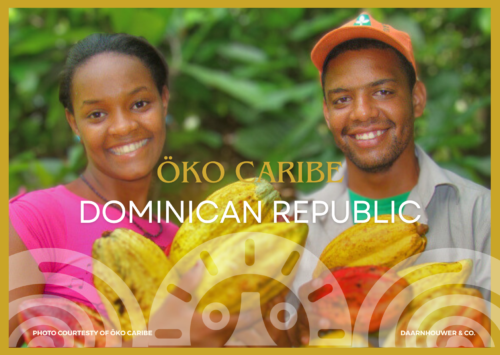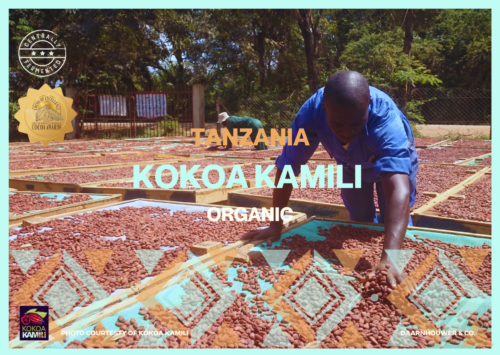MAVA Ottange is a 7 hectare farm located in the Sambirano Valley and part of a group of farms that make up the MAVA Estate. This former state owned plantation has its own unique blend of genetics that are carefully fermented and dried on their own post harvesting facility. Ottange was recognized amongst the world's best 18 cacaos of 2017 by the International Cacao of Excellence Awards. Its flavours have also contributed to award winning chocolate at the Academy of Chocolate Awards, the Great Taste Awards and the International Chocolate Awards.
Cocoa Beans
-
 With an annual cacao harvest averaging around 100-150 tons per year, Jamaica currently exports about 90% of its annual production. Until recently, the beans underwent a "polishing" process that gave them a unique outward appearance. This process is no longer used on the beans but the richness and depth of flavours remains.
With an annual cacao harvest averaging around 100-150 tons per year, Jamaica currently exports about 90% of its annual production. Until recently, the beans underwent a "polishing" process that gave them a unique outward appearance. This process is no longer used on the beans but the richness and depth of flavours remains. -
 Öko Caribe works alongside more than 160 farmers in Duarte. Together, they produce and commercialize around 500 MT of top quality Organic certified cacao on a yearly basis. Through technical and financial support, the small holder farmers are able to improve the quality and yield of their cacao which is collected fresh and fermented in a state of the art fermentation center run by Öko Caribe. Öko Caribe conventional cocoa beans showcase the same commitment to quality as the company has shown with its organic certified cacao.
Öko Caribe works alongside more than 160 farmers in Duarte. Together, they produce and commercialize around 500 MT of top quality Organic certified cacao on a yearly basis. Through technical and financial support, the small holder farmers are able to improve the quality and yield of their cacao which is collected fresh and fermented in a state of the art fermentation center run by Öko Caribe. Öko Caribe conventional cocoa beans showcase the same commitment to quality as the company has shown with its organic certified cacao. -
 Since its foundation, Kokoa Kamili has had a deep commitment to benefitting the farmers it works with and to quality. Their cocoa beans are found in award winning chocolate bars, couvertures and chocolate products around the world. Kokoa Kamili earned a much coveted spot amongst the world's 18 best cacaos at the 2017 edition of the Cacao of Excellence Awards.
Since its foundation, Kokoa Kamili has had a deep commitment to benefitting the farmers it works with and to quality. Their cocoa beans are found in award winning chocolate bars, couvertures and chocolate products around the world. Kokoa Kamili earned a much coveted spot amongst the world's 18 best cacaos at the 2017 edition of the Cacao of Excellence Awards. -
 After the Portuguese introduced cacao to Principe, the small island became the gateway of cacao to Africa. From there cacao was brought to its sister island of São Tomé and later on into mainland West Africa. The bittersweet history of cacao on both islands was reflected in the neglect of plantations and crops for many decades. Nowadays, it has regained strength and has become an important source of income for many smallholder farmers who are proud of their contribution to the country's production.
After the Portuguese introduced cacao to Principe, the small island became the gateway of cacao to Africa. From there cacao was brought to its sister island of São Tomé and later on into mainland West Africa. The bittersweet history of cacao on both islands was reflected in the neglect of plantations and crops for many decades. Nowadays, it has regained strength and has become an important source of income for many smallholder farmers who are proud of their contribution to the country's production. -
 After the Portuguese introduced cacao to Principe, the small island became the gateway of cacao to Africa. From there cacao was brought to its sister island of São Tomé and later on into mainland West Africa. The bittersweet history of cacao on both islands was reflected in the neglect of plantations and crops for many decades. Nowadays, it has regained strength and has become an important source of income for many smallholder farmers who are proud of their contribution to the country's production.
After the Portuguese introduced cacao to Principe, the small island became the gateway of cacao to Africa. From there cacao was brought to its sister island of São Tomé and later on into mainland West Africa. The bittersweet history of cacao on both islands was reflected in the neglect of plantations and crops for many decades. Nowadays, it has regained strength and has become an important source of income for many smallholder farmers who are proud of their contribution to the country's production.








